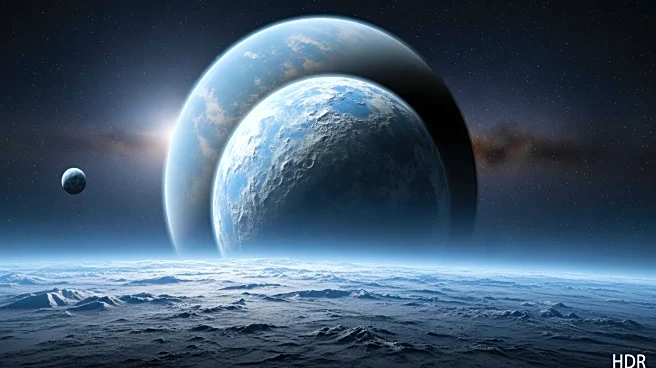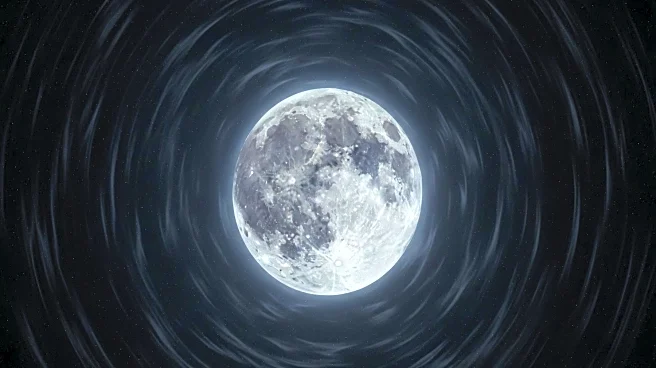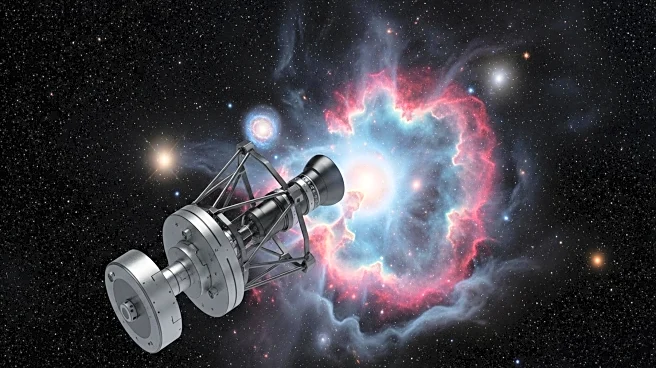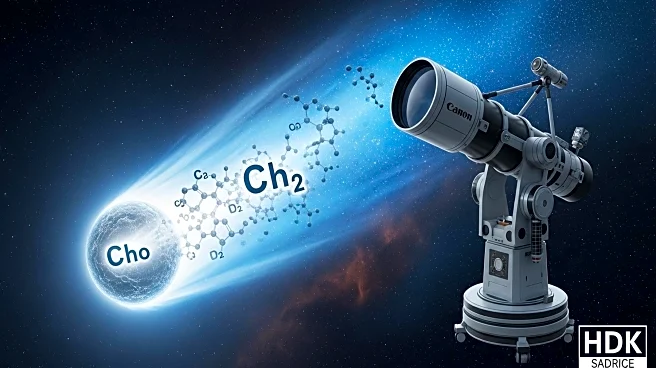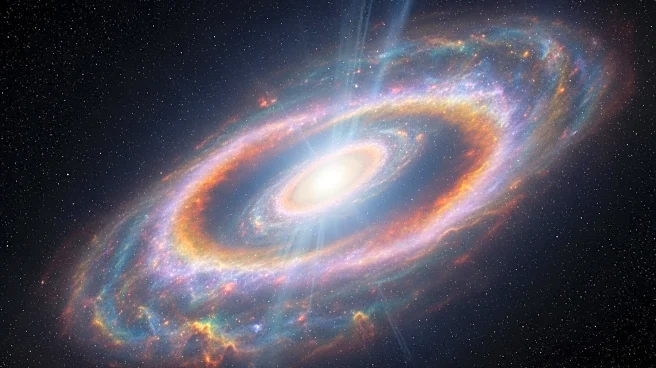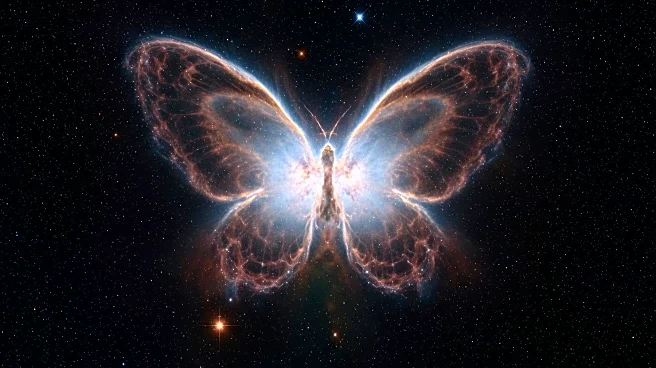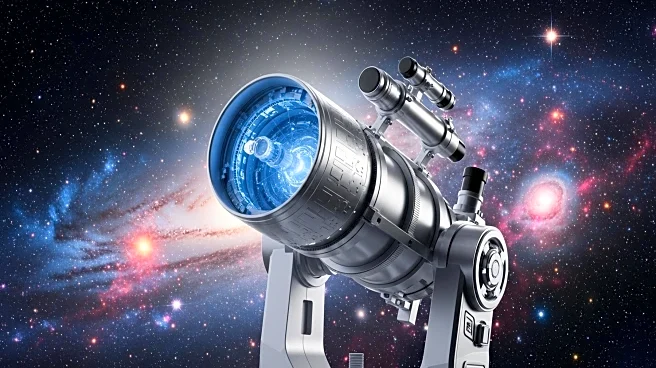What's Happening?
Recent research suggests that two of Pluto's midsize moons, Nix and Hydra, may have originated from the interior of its largest moon, Charon. Observations from the James Webb Space Telescope (JWST) indicate that these moons share more similarities with Charon's interior than with other objects in the Kuiper Belt. This supports the hypothesis that Pluto and Charon formed through a 'kiss-and-capture' process, where a collision stripped off proto-Charon's outer layers, creating debris that eventually formed the moons. The study, presented by planetary scientist Brian Holler, highlights the unique surface composition of Nix and Hydra, which may be remnants of Charon's ancient interior.
Why It's Important?
This discovery provides new insights into the formation and evolution of celestial bodies in the outer solar system. Understanding the composition and origin of Pluto's moons can help scientists learn more about the processes that shape planetary systems. The findings also demonstrate the capabilities of the JWST in studying distant objects, potentially leading to further discoveries about the Kuiper Belt and beyond. This research could influence future missions and studies aimed at exploring the outer reaches of our solar system.
What's Next?
Further observations using the JWST are planned to delve deeper into the composition of Nix and Hydra. Spectroscopic studies could reveal more about the ammonia-rich material on their surfaces, providing clues about their formation and evolution. These findings may also prompt additional research into similar systems, enhancing our understanding of the dynamics and history of the outer solar system.
